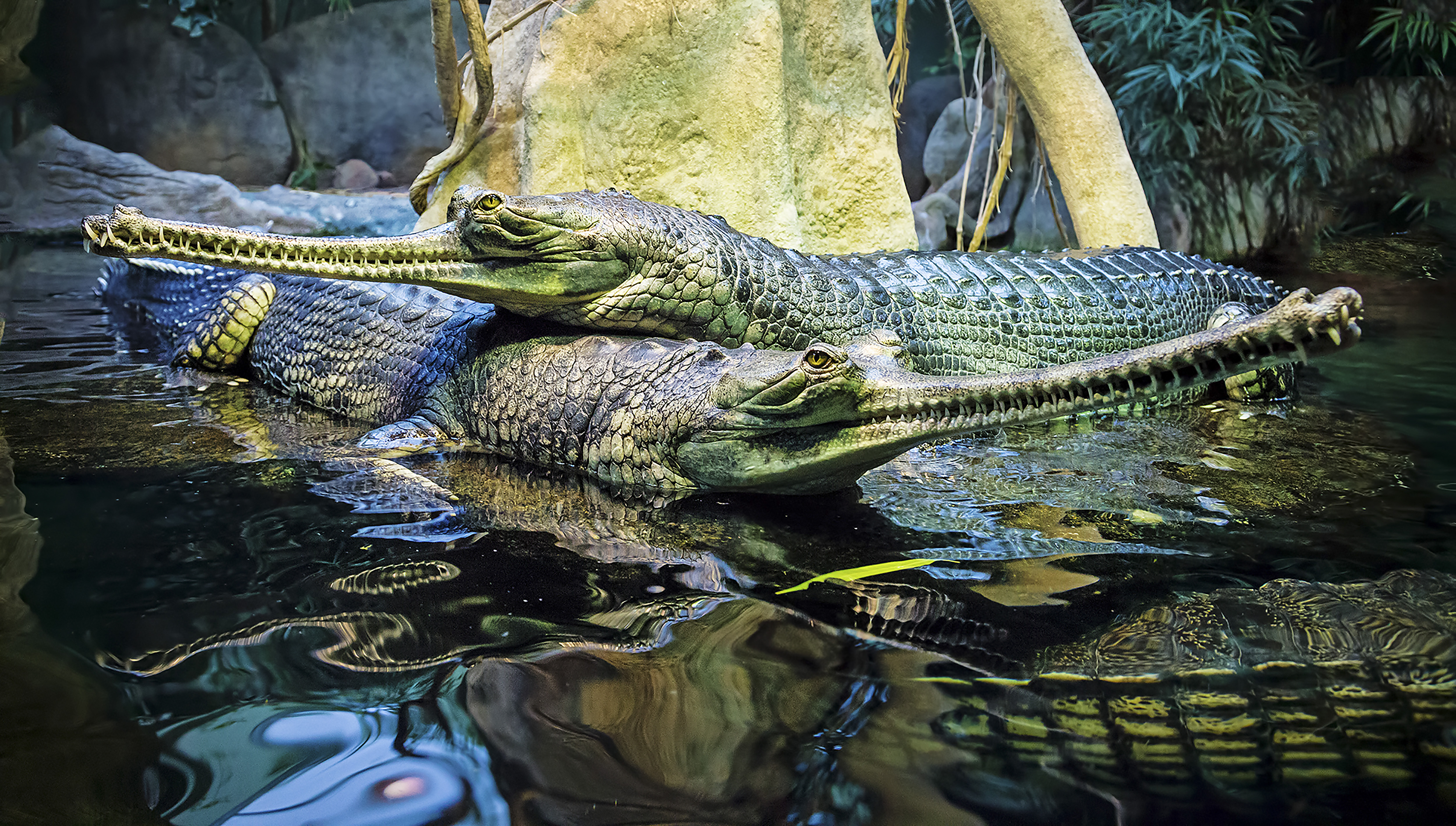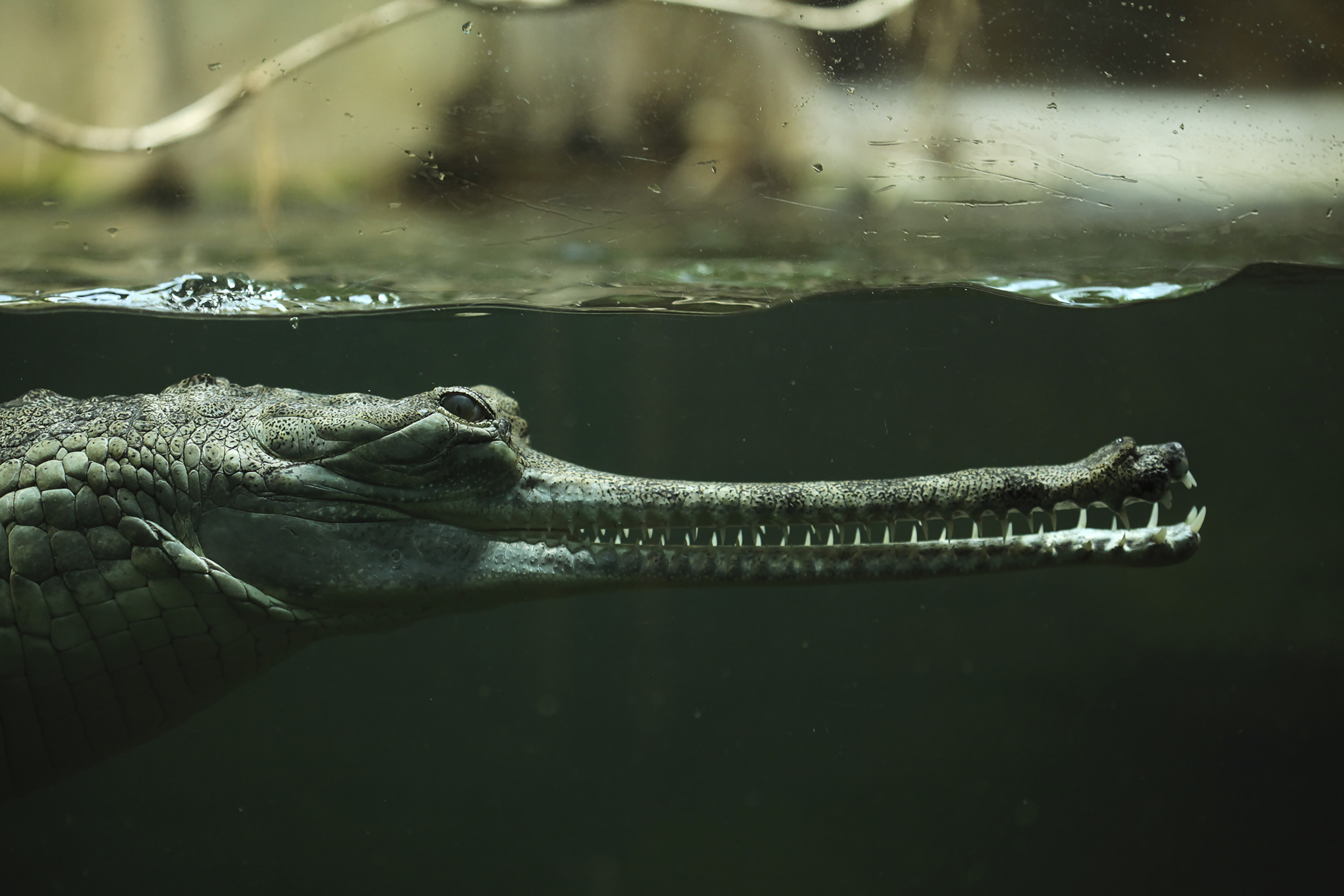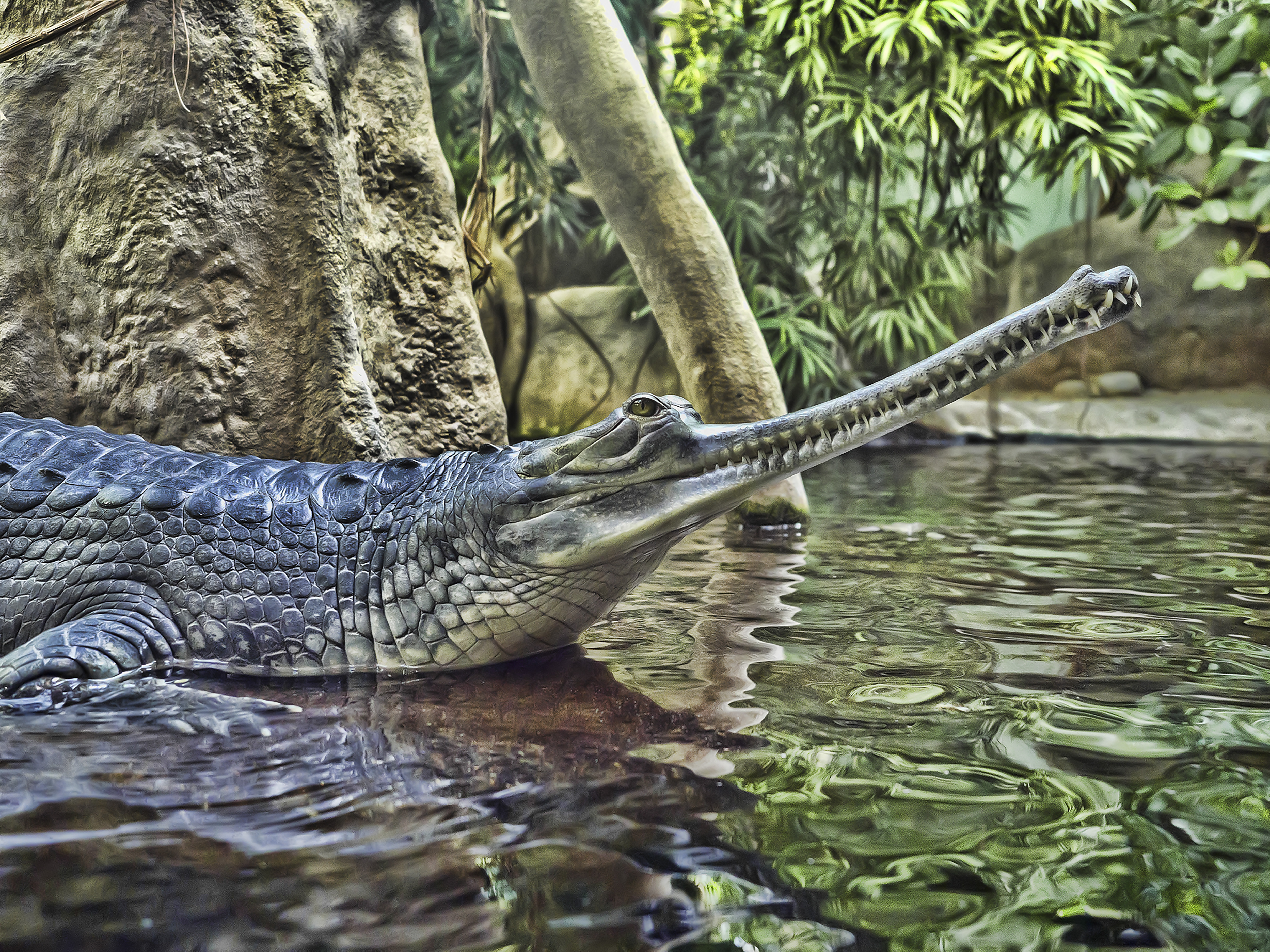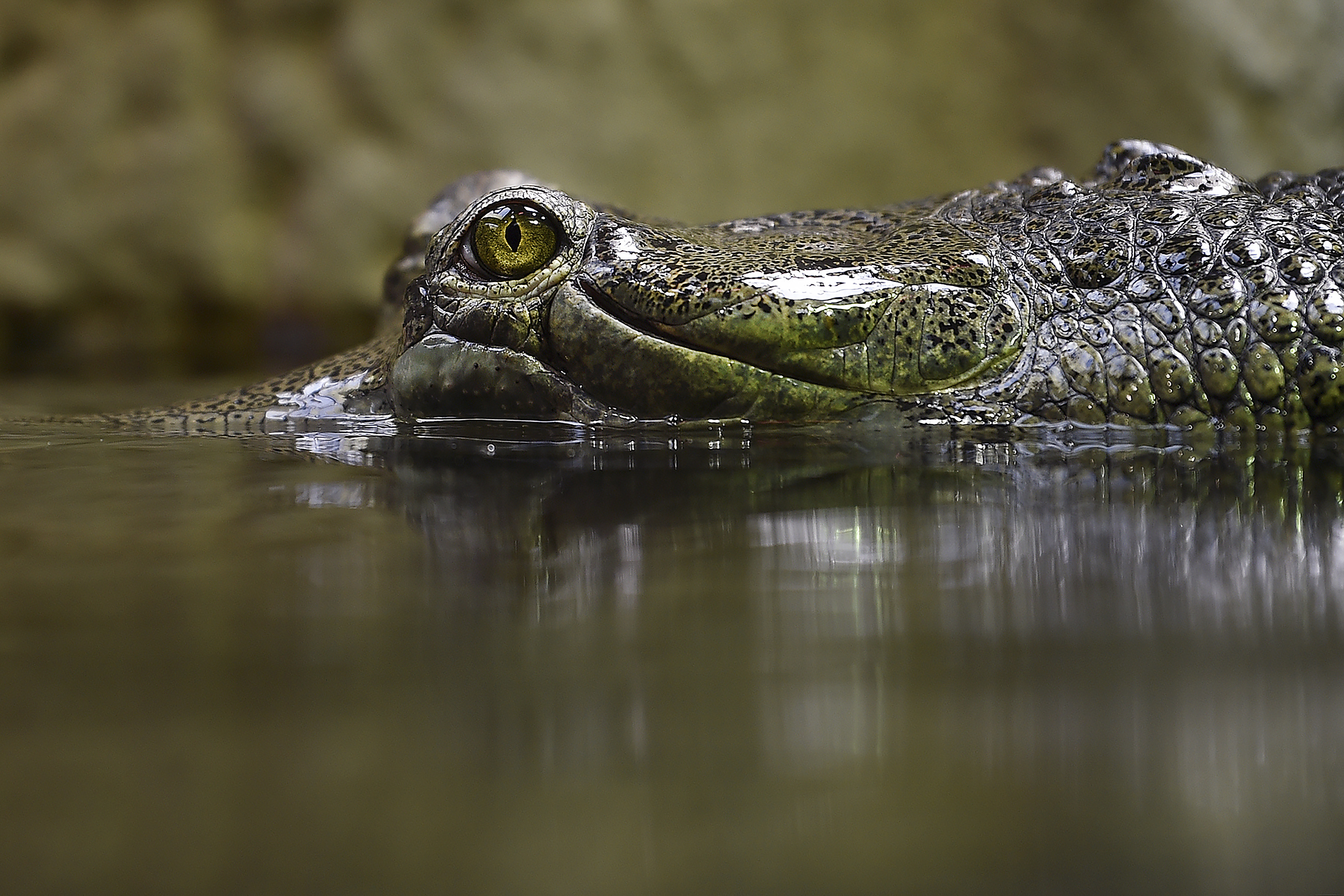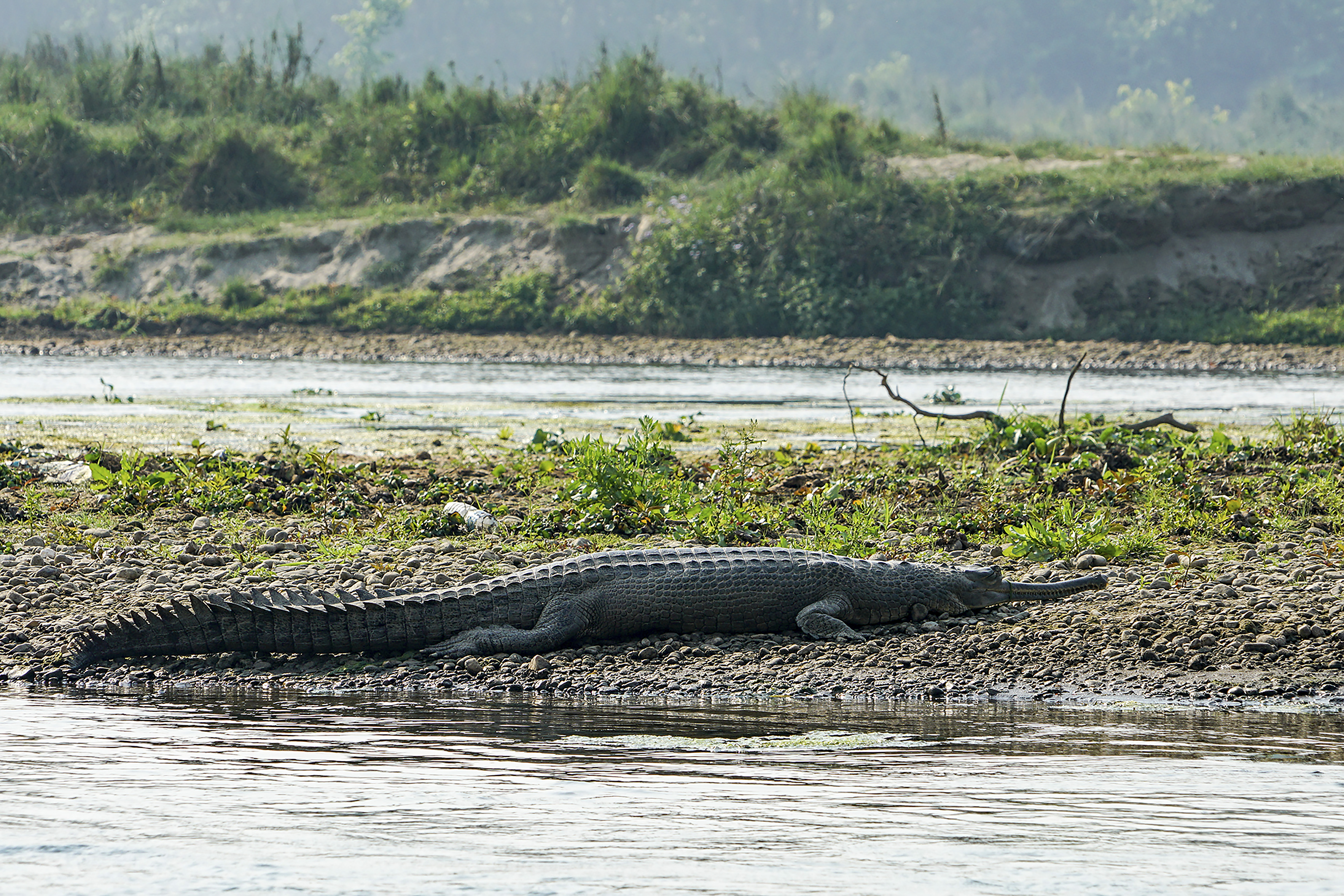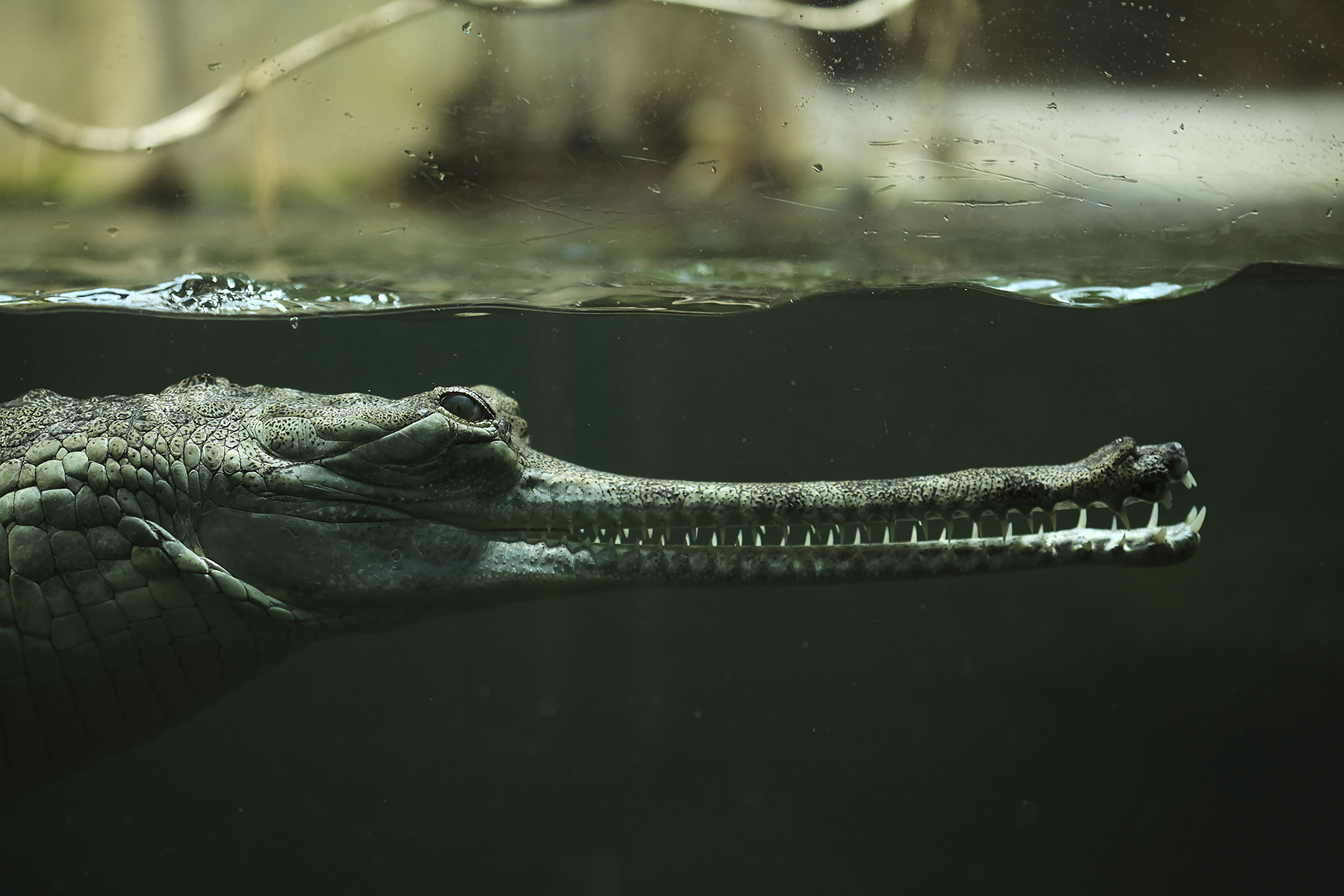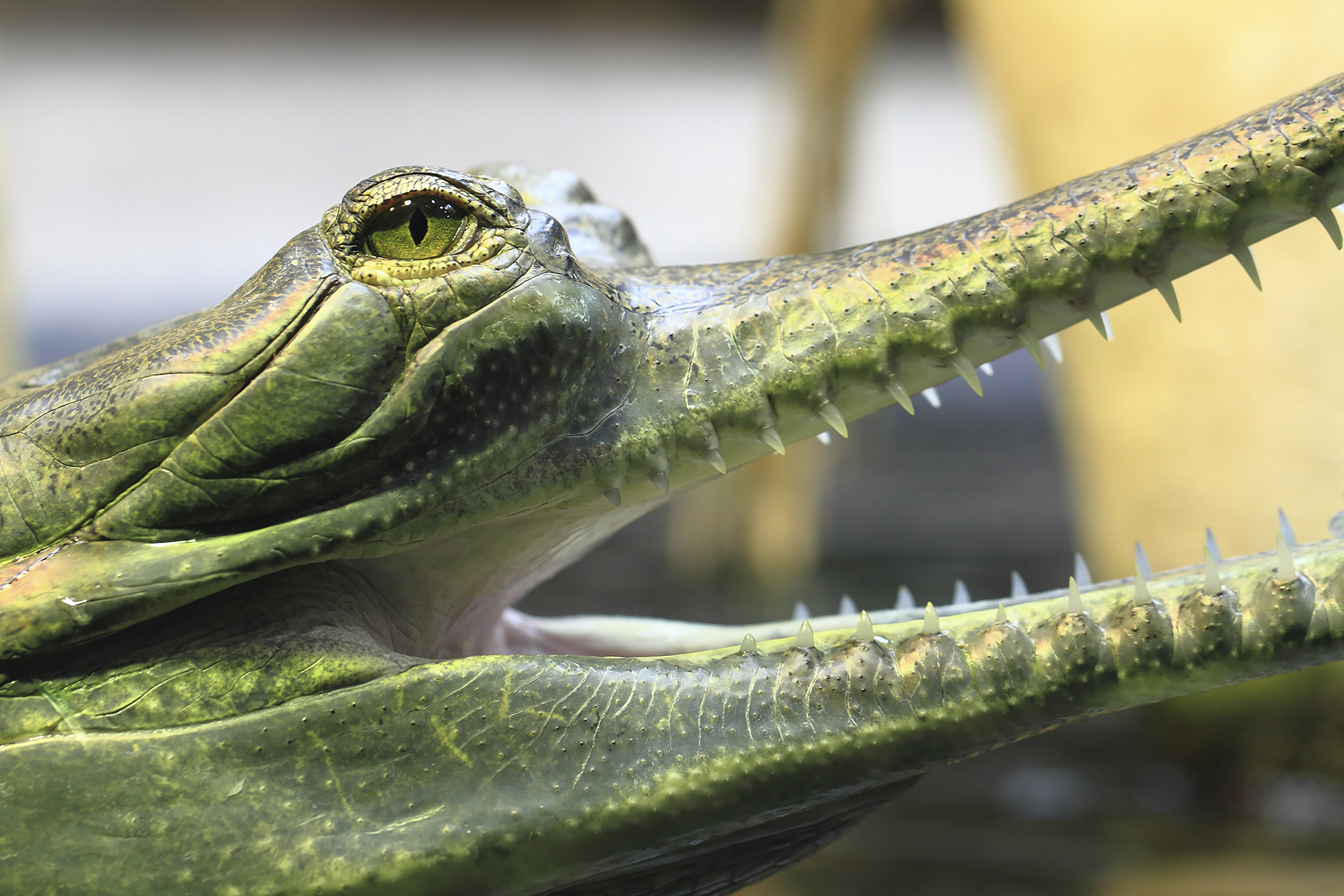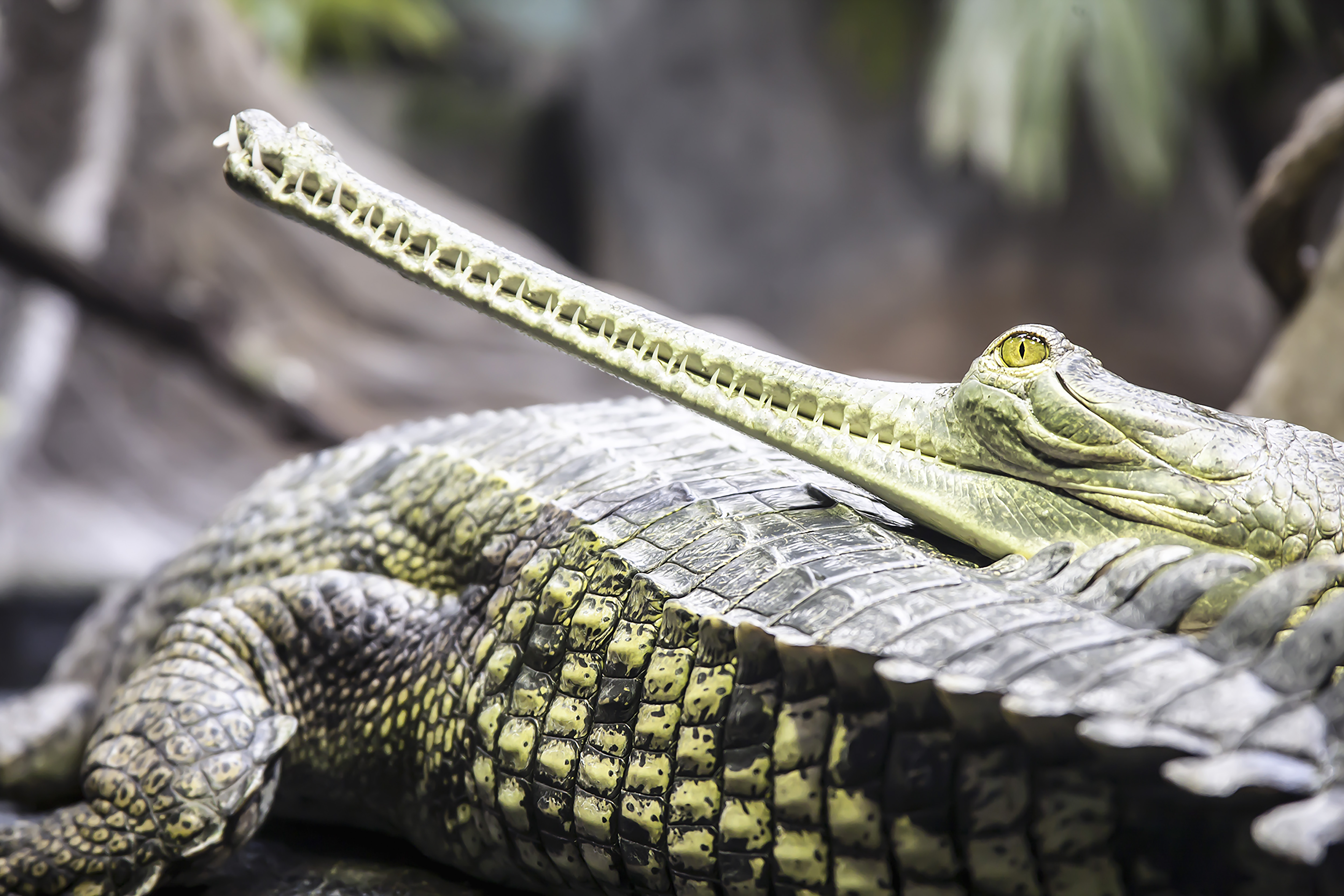Gharial
(Gavialis gangeticus)
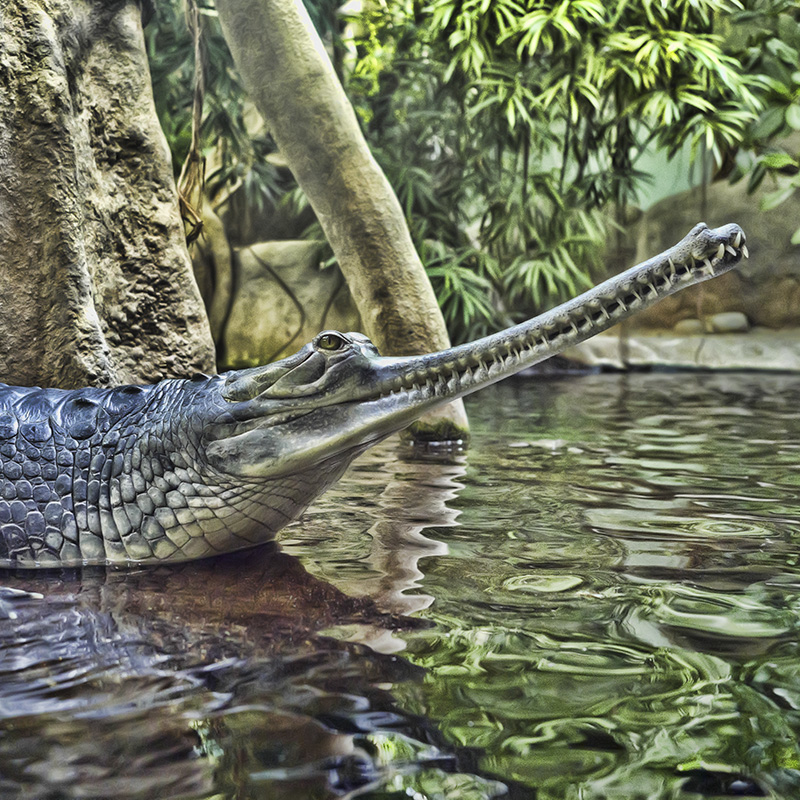
Naga-Manapuri-Chin Hills Moist Forests
STATISTICS
Length up to
6 meters
Weight up to
250 kgs
Lifespan
60 years
Excellent Swimmer - Skilled Hunter - Well Camouflaged
One of the world’s largest crocodiles, the Gharial has the narrowest snout of any species. Its name is derived from the male having a bulbous knob on its nose which resembles a traditional Indian pot called a “ghara”. Equipped with 108 – 110 razor sharp teeth and its long slender snout, this species is specialised for catching fish.
It is an important predator, regulating fish populations. This species hunts either by remaining completely motionless and submerged and waiting for an approach or by sweeping its snout side to side. The snout is equipped with sensory organs that sense vibrations from prey in the water.
The Gharial lives in freshwater systems with strong currents. Unlike other crocodiles, this species has smooth scales and webbed feet for propulsion through the water making it an excellent swimmer, but it has weak leg muscles so it does not have great locomotion on land.
Mating stars mid February, the female will join other females to build nests together about 1 – 5 meters from the water line, laying 20 – 95 eggs. Incubation takes up to 93 days and the sex of the hatchlings is determined by temperature. The female protects her nest and also cares for the young hatchlings.
BIODIVERSITY BENEFIT
Prey Population Control
THREATS
Hunting
Hunter for its skin.
Traditional Medicine
Persecuted by local fishermen for parts used in traditional medicine.
Egg Collection
Local tribes collect eggs for consumption.
Fishing
Caught in gill nets and lack of prey due to overfishing.
Habitat Destruction
Due to the building of dams, barrages, sand-mining and more.
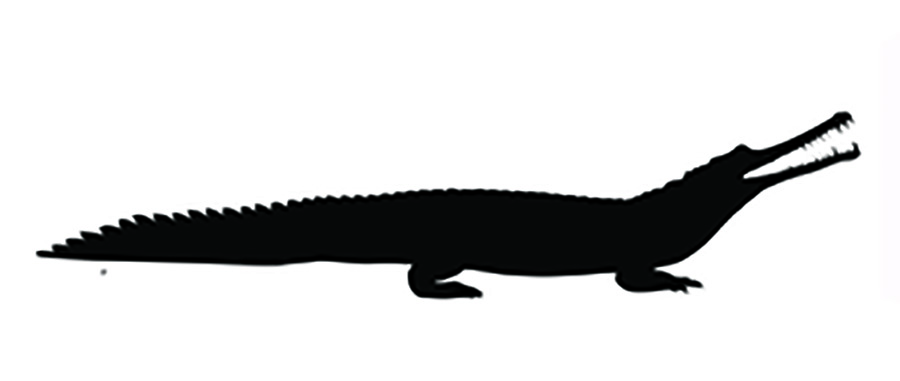
< 250
Left in the Wild
PROTECT THE WILDARK 100
